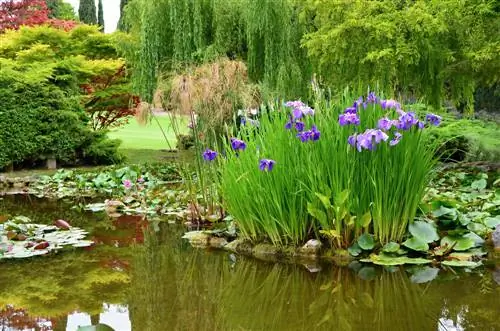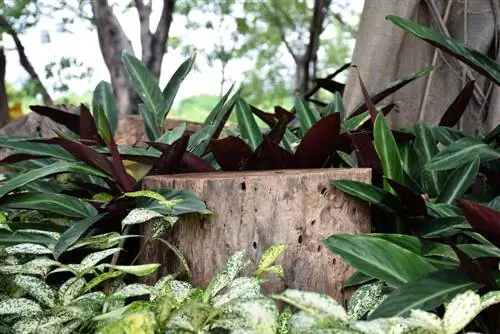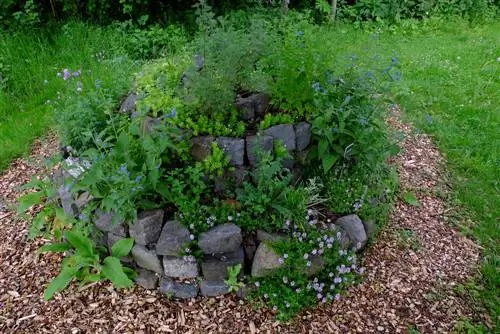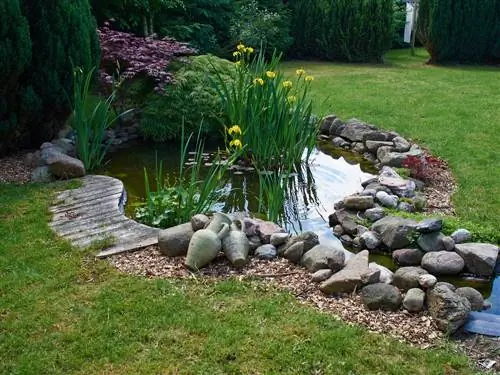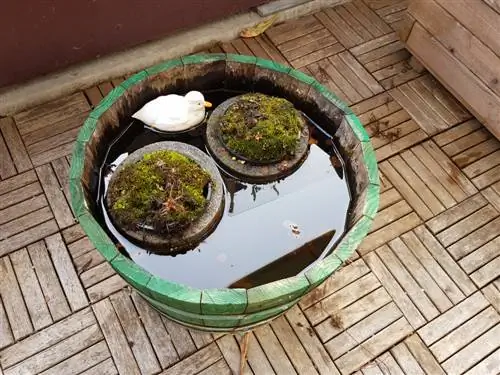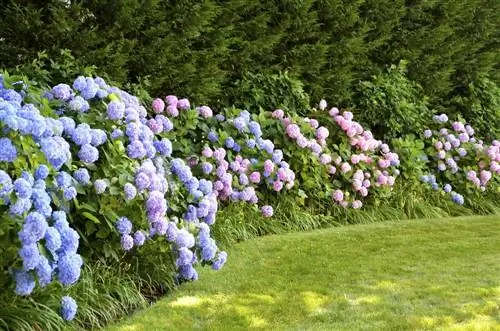- Author admin [email protected].
- Public 2023-12-16 16:46.
- Last modified 2025-01-23 11:21.
In order to plant a garden pond not only in a visually appealing way, but also with the most effective water-clarifying function, there are a few rules to follow. We'll tell you which ones in this little guide.
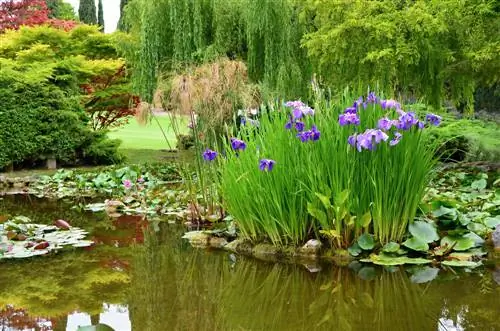
How do you plant a garden pond correctly?
To plant a garden pond effectively and attractively, choose plants for different depth zones: swamp zone (marsh rush, reed), shallow water zone (saddle, rushes, frog spoons, hedgehogs) and middle zone (water lilies, pond bumblebee, sea jug). Pay attention to the priorities: optical decorative value or biological balance.
No garden pond without plants
With your own pond in the garden you can create a calm and life-giving water oasis. But it's not just the wet element itself that has a tremendously enhancing character for the garden - it's the planting that creates a real decorative value and, above all, a livelihood for numerous animal species. In addition, with the right choice of plants in the right pond base, you can also get a completely natural and free sewage treatment system for the pond water!
An overview of the planting functions:
- Jewelry Value
- Animal habitat
- Natural water treatment plant
What has priority?
The interests in garden pond planting are, as you can see, diverse - and their priorities must be weighed up against each other when creating the pond.
More chic, less organic
If the decorative value of your pond is your top priority, you should perhaps choose unusual, possibly exotic plants and take measures to maintain the plant structure. This includes, for example, placing vigorous species such as calamus in plant baskets. This will prevent them from spreading uncontrollably and messing up the plant arrangement.
Pond plants that are particularly attractive thanks to their flowers and/or leaves include, for example, the swamp iris, the false calla, the algae fern, papyrus and of course the elegant lotus.
If you concentrate primarily on the visual adornment of the pond systems and would like to pay less attention to the balance of the water environment, we recommend integrating a filter pump system.
More organic, less chic
If you are more interested in creating a valuable, well-functioning biotope, you should pay attention to the plant functions in the respective pond depth zones when choosing and arranging plants. This way you attract friendly, interesting and useful animal guests and you don't have to worry about the balance of the water environment. Such a natural pond can still be made attractive.
So that it regulates itself, a certain size and depth is important. A stable biotope can only form in a basin with sufficient water volume and different depth levels. As a rule of thumb, there is at least 6 m² of area and around 1.20 m depth at the deepest point. Create different depth levels for plants so they can perform different functions.
The lowest zone, the swamp zone, is planted primarily with plants that provide support and structure, such as the common swamp rush or reed. The next deeper shallow water zone of 20 to 60 cm deep, which takes up around 1/3 of the total area, is intended for the important cleaning marsh plants. Here, nutrient-taking, oxygen-giving and thus algae-avoiding species such as calamus, rushes, frog spoons or hedgehogs should be used. The deepest middle zone is ideal for decorative water lily species or other floating leaf species such as the pond bumblebee or the sea jug.

